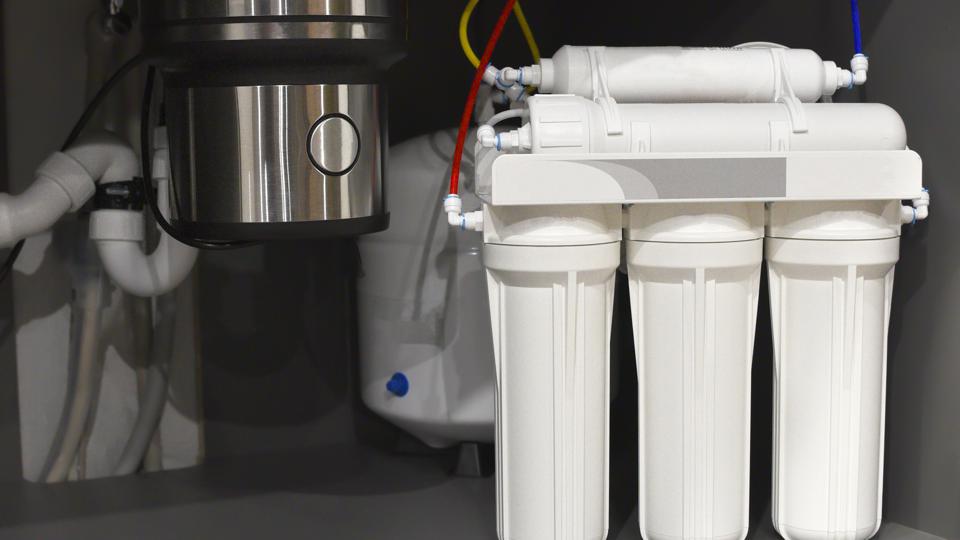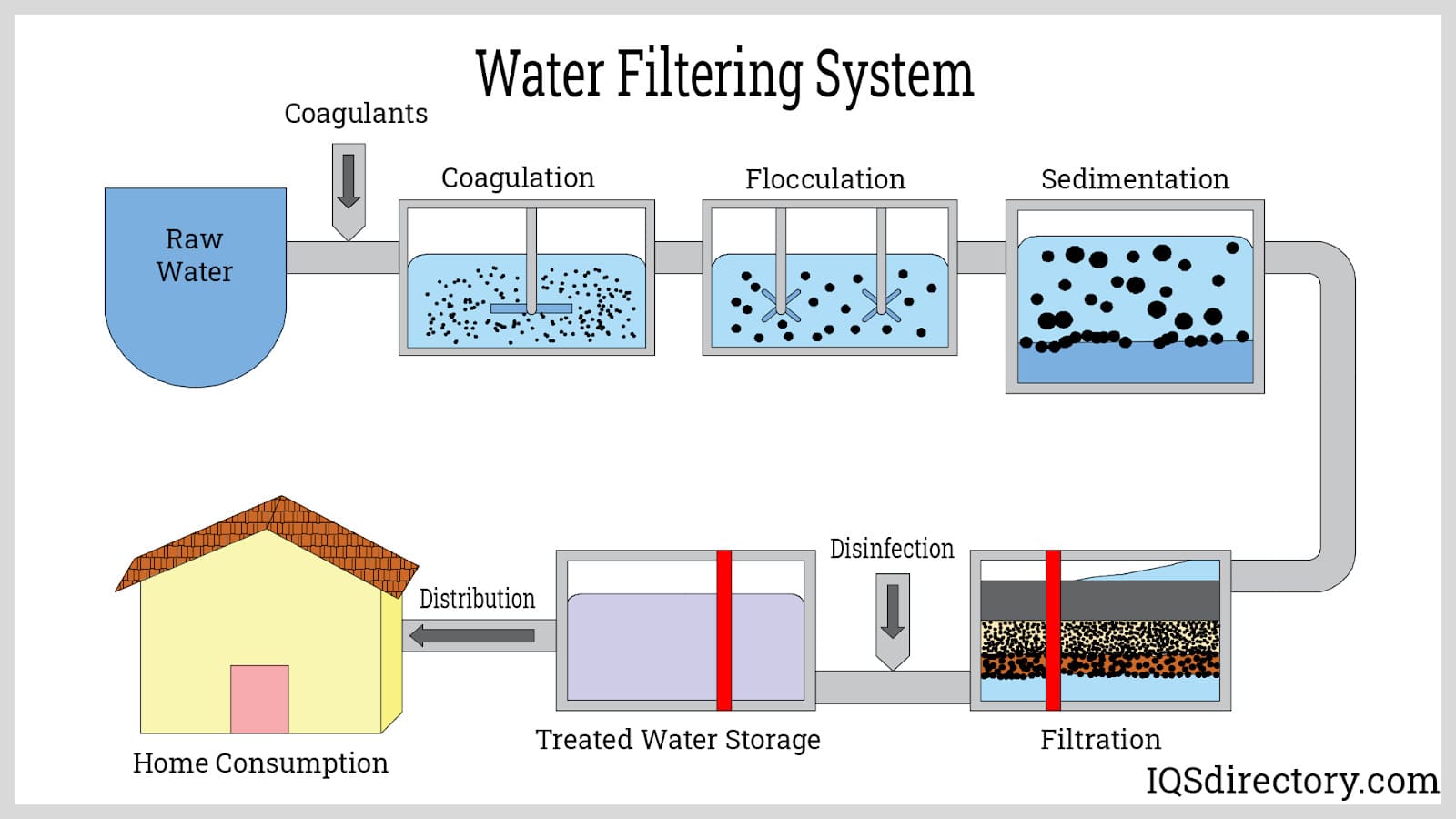In this article, you will discover the two most commonly used water filtration systems. Clean and safe drinking water is essential for our well-being, and having a reliable filtration system can make a significant difference. Whether you’re concerned about eliminating impurities or improving the taste of your water, understanding these two popular filtration systems will help you make an informed decision and ensure access to high-quality water in your home. When it comes to ensuring the quality of your drinking water, there are several options available. Two of the most common and effective water filtration systems are reverse osmosis and activated carbon filtration. In this article, we will explore how these systems work, discuss their pros and cons, and outline their maintenance requirements. Additionally, we will compare the two systems across various factors such as filtered contaminants, water taste, water flow rate, initial cost, and maintenance cost. By the end, you will have a clear understanding of which system may be the best fit for your needs.


This image is property of www.puragainwater.com.
1. Reverse Osmosis Filtration System
1.1 How Reverse Osmosis Works
In a reverse osmosis filtration system, water is forced through a semipermeable membrane to remove contaminants and impurities. The system operates on the principle of osmosis, where water naturally flows from an area of lower solute concentration to an area of higher solute concentration. Reverse osmosis reverses this process by applying pressure to force water molecules across the membrane, leaving behind dissolved solids, heavy metals, and other contaminants. The result is clean, purified water that is free from most impurities.
1.2 Pros of Reverse Osmosis Filtration System
One of the main advantages of a reverse osmosis filtration system is its effectiveness in removing a wide range of contaminants. It can eliminate harmful substances such as lead, arsenic, chlorine, fluoride, and nitrates. This makes it an excellent choice for areas with poor water quality or where there are specific concerns about certain contaminants. Another benefit is that it improves the taste and odor of water, providing a refreshing and clean drinking experience.
1.3 Cons of Reverse Osmosis Filtration System
Despite its efficiency in removing contaminants, a reverse osmosis system has a few drawbacks. First, it requires a significant amount of water pressure to operate effectively, which may not be available in all households. Additionally, the filtration process removes not only harmful substances but also essential minerals like calcium and magnesium, which are beneficial to our health. Therefore, if you rely solely on reverse osmosis water, you may need to consider alternative sources or supplements to ensure an adequate mineral intake.
1.4 Maintenance Requirements
Maintaining a reverse osmosis filtration system is relatively simple. The system typically requires filter replacements every six to twelve months, depending on usage and water quality. Additionally, it is necessary to clean and sanitize the system periodically to prevent bacterial growth. Regular inspections and maintenance by a professional are also recommended to ensure the system is functioning optimally.
2. Activated Carbon Filtration System
2.1 How Activated Carbon Filtration Works
Activated carbon filtration systems utilize a bed of activated carbon, which is highly porous and has a large surface area. As water passes through the carbon bed, impurities and contaminants are trapped within the carbon’s microscopic pores. This filtration process effectively removes chlorine, volatile organic compounds (VOCs), pesticides, and certain chemicals from the water, resulting in clean and odor-free drinking water.
2.2 Pros of Activated Carbon Filtration System
One of the significant advantages of an activated carbon filtration system is its ability to remove chlorine and improve the taste and odor of water. It is also effective at removing organic compounds, such as benzene and trichloroethylene, which may be present in drinking water. Additionally, activated carbon filters do not remove essential minerals from the water, ensuring a more balanced drinking experience.
2.3 Cons of Activated Carbon Filtration System
While activated carbon filters are efficient in removing many contaminants, they may not be as effective in removing heavy metals, dissolved solids, or certain chemicals. This makes them less suitable for areas with high levels of these contaminants. Additionally, the carbon bed in the filtration system requires regular replacement as it becomes saturated and loses its effectiveness over time.
2.4 Maintenance Requirements
Maintaining an activated carbon filtration system is relatively straightforward. The carbon filters typically need replacement every six to twelve months, depending on water usage and quality. Regular inspections and maintenance are also recommended to ensure optimal performance and prevent the growth of bacteria or mold within the system.
This image is property of i.shgcdn.com.
3. Comparison of Reverse Osmosis and Activated Carbon Filtration Systems
3.1 Filtered Contaminants
When it comes to the range of contaminants removed, reverse osmosis systems are generally more effective than activated carbon filters. Reverse osmosis can eliminate a broader spectrum of contaminants, including heavy metals, fluoride, nitrates, and bacteria. On the other hand, activated carbon filtration primarily focuses on removing chlorine, organic compounds, and some chemicals. Depending on your specific water quality concerns, one system may be more suitable than the other.
3.2 Water Taste
Both reverse osmosis and activated carbon filtration systems can significantly improve the taste and odor of water. However, some individuals prefer the taste of reverse osmosis water, which tends to be purer and crisp. Activated carbon filters, while still enhancing the taste, may not provide the same level of purity and freshness.
3.3 Water Flow Rate
In terms of water flow rate, activated carbon filtration systems generally have a higher flow rate compared to reverse osmosis systems. This means that you will have a faster supply of filtered water with an activated carbon filter. Reverse osmosis systems, on the other hand, require more time to filter the water due to the complex process involved.
3.4 Initial Cost
The initial cost of a water filtration system is an important factor to consider. Reverse osmosis systems tend to be more expensive upfront compared to activated carbon filters. This is primarily due to the complexity of the system and the need for professional installation. Activated carbon filters, on the other hand, are generally more affordable and can often be installed without professional help.
3.5 Maintenance Cost
When it comes to maintenance costs, both systems require periodic filter replacements, which can vary depending on usage and water quality. However, reverse osmosis systems may have higher long-term maintenance costs due to the need for additional components, such as a storage tank and a booster pump. Activated carbon filters, on the other hand, have lower long-term maintenance costs as they have fewer components and are generally easier to maintain.
In conclusion, both reverse osmosis and activated carbon filtration systems offer effective means of improving the quality of your drinking water. Reverse osmosis excels in removing a wide range of contaminants but may remove essential minerals in the process. Activated carbon filters primarily focus on chlorine and organic compounds while maintaining the natural mineral balance. Ultimately, the choice between the two systems will depend on your specific water quality concerns, preferences, and budget. It is always advisable to consult with a water treatment professional to determine the most suitable filtration system for your needs.


This image is property of thumbor.forbes.com.




